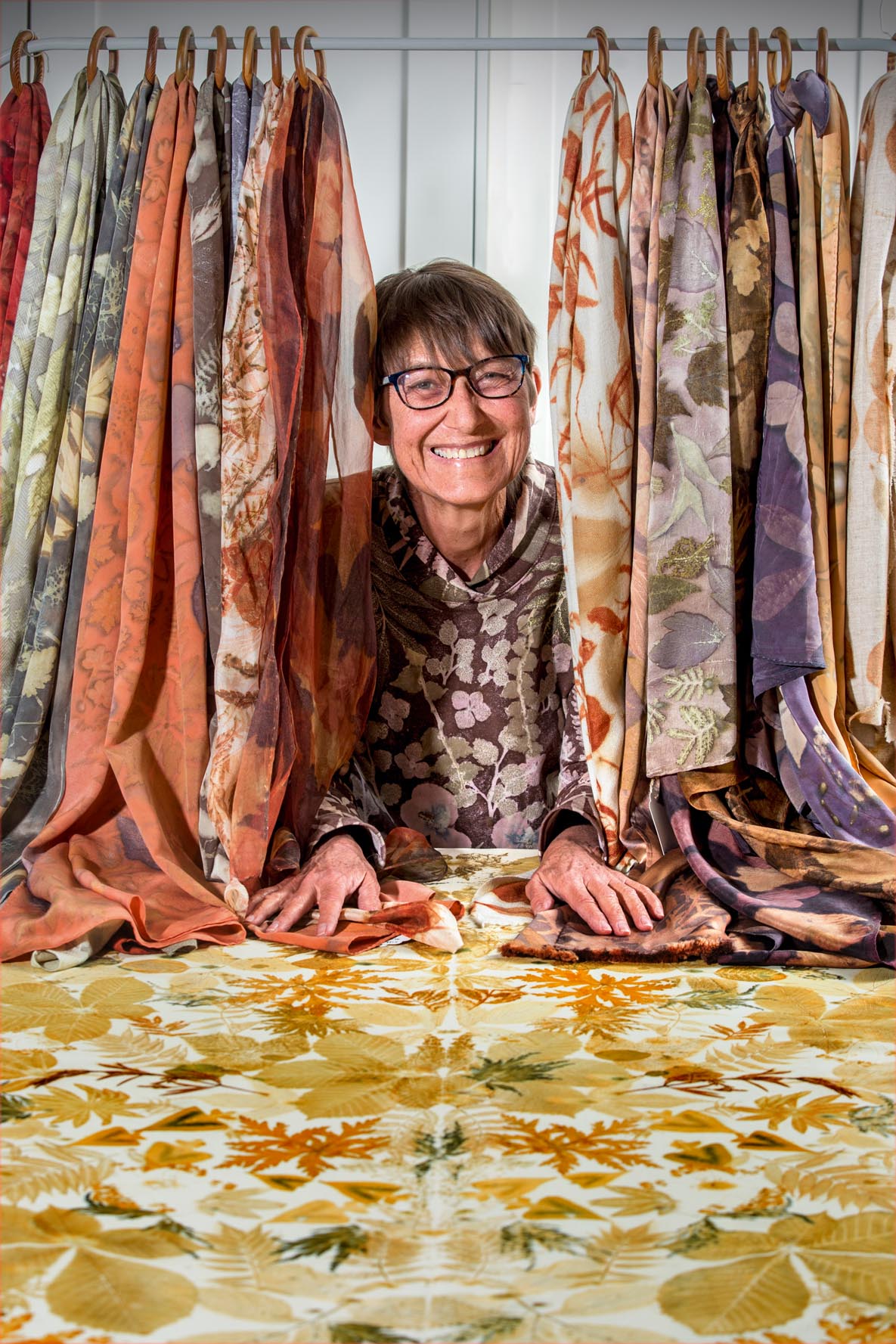In Focus: The botanical textile artist turning fragments of the Cotswolds into art
Jane Wheatley speaks to Caroline Nixon about her work and materials.


Botanical textile artist Caroline Nixon soon found she had everything she needed for her work in her own garden, as well as ‘the satisfaction of seeing a process through from growing a plant to harvesting the leaves to making a piece of work’.
Her printing starts with a piece of scrupulously clean white fabric — ‘I like to use vintage French bed linen’ — on which leaves are laid, then bound tightly around a pole and immersed in a dye bath. ‘This coaxes the pigment out of the leaves and into the cloth,’ Dr Nixon explains. She takes the lid off a fish kettle and lifts a bundle out of the dark brew, a mix of alum, rusty nails and eucalyptus leaves, which is ‘pretty filthy and quite witchcrafty’.
Bees and butterflies are busy in the warmth of a July afternoon as she takes me around the garden, where there’s a mound of bright-orange coreopsis. ‘Each of these flowers will produce an almost photographic imprint of itself, but most flowers are fugitive, leaving a stain that fades,’ she points out. ‘Leaves are more reliable, particularly aromatic ones — the veins and margins contain tannin and show up well.’
We walk on, brushing past the enchanter’s nightshade, chocolate vine, hedge maple, walnut and the dye plants — genista tinctoria, marigold and madder, which produces red from its roots.
Dr Nixon sources fabrics from charity shops and upcycles clothing. ‘Cashmere often has moth holes, so I conceal them with embroidery — people request it now.’ She lays out beautifully printed silk scarves and I comment that her website doesn’t do the work justice. ‘Only people who know my work buy online,’ she admits. Otherwise, she works to commission, exhibits in galleries (including the Renew Gallery in Malmesbury, Wiltshire, Octagon Gallery, Whichford Pottery, Warwickshire, and Church Lane Gallery in Banbury, Oxfordshire) and visits textile fairs, such as that at Compton Verney, Warwickshire
www.handmadetextilesbycaroline.co.uk
Exquisite houses, the beauty of Nature, and how to get the most from your life, straight to your inbox.
Jane Wheatley is a former staff editor and writer at The Times. She contributes to Country Life and The Sydney Morning Herald among other publications.
